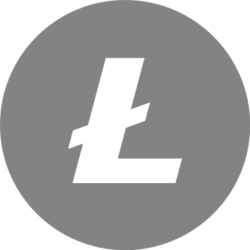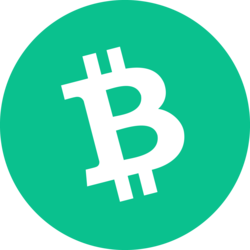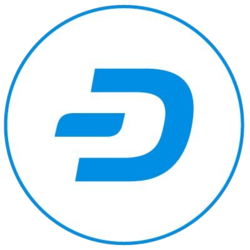The CFTC Commissioner Brian Quintenz described ICOs like things that can transform. He said that «they may start their life as a security from a capital-raising perspective but then at some point turn into a commodity».
This statement was probably the most specific comment by the CFTC regarding the classification of ICO’s and shows quite well the nature of many tokens. The reasoning behind the Simple Agreement for Future Tokens (SAFT) framework is the fact that there is no clear line that determines which types of tokens are securities and which are not. So, tokens sold as utility tokens might end up being considered securities at the time of issuance by the USA Securities and Exchange Commission (SEC), which is often followed by many unwanted legal consequences.
Issuing unregistered securities is a violation of Section 5 of the Securities Act of 1933, and, beyond significant monetary penalties, issuers could face a maximum of 5 years of federal prison. Secondary trading markets that facilitate transactions in the tokens could themselves be liable for penalties for failing to register as a broker-dealer, exchange or alternative trading system (ATS). An organization that claims that its tokens are non-security utility tokens, and does not register or use a registration exemption, also must evaluate the «Blue Sky» securities laws of all states in which token buyers reside.
How the SAFT works
The SAFT framework seeks to solve this uncertainty for both investors and issuer. If tokens are sold with the believe that they will be a utility / commodity in the future, a SAFT contract can be created as a security sold to accredited investors. This agreement is ensuring investors the delivery of tokens after a functioning network or application has been developed and tokens can be used on it. The bet that issuers and investors of a SAFT are making is that the SEC or the courts will determine that the tokens are not securities at this later point, while they might have been classified as such during the ICO because there was no fully functional network yet.
The SAFT looks like this:
- The developer of a token-based decentralized network enters into a written agreement, called a SAFT, with accredited investors. The SAFT calls for investors to pay money to the developer in exchange for a right to tokens once the network is completed. The investors usually get a discount. The developers don’t issue any pre-functional tokens at this stage, but they do file the required forms with the SEC.
- The developer uses the money for developing the network. This could take months or years. Still no pre-functional tokens are issued.
- When the network’s basic functionality exists, the developer creates the tokens and delivers them to the investors, who can sell tokens to the public on the open market to realize their profit.
- The developers can also sell tokens to the public at this point as it is now a consumptive use-token.
What are benefits of using SAFT?
Through the two-step process, the SAFT framework is bringing a financing structure and standard for token financing that fits with the stage and intent of the companies. If executed as set forth in the SAFT white paper, a token sale can permit users to participate financially in that creation and growth without a significant risk. This structure also allows more institutional investors to feel confident participating in those kinds of token sales.
According to the initiator of the SAFT whitepaper, Marco Santori, the framework is a way to work within existing laws, one that doesn’t assume legislative change to accommodate the technology could be possible. Resulting, SAFTs can reduce risks for institutional investors, democratizing access through a vibrant secondary market.
In such way, only wealthy individuals and institutional buyers would bear the risk of the project failing, while consumer protection regulations would still apply if the final product – the network – turns out to be defective.
A lot of blockchain projects, originally based in the USA, have relocated the project to non-USA jurisdictions like Switzerland. This seems to be due primarily to questions around the applicability of the USA securities, money services or tax laws. The SAFT framework enables projects to have more clarity regarding these three bodies of law. This might lead to more companies remaining within the USA jurisdiction.
What are disadvantages of the SAFT framework?
Even though tokens issued using a SAFT are more likely to escape the SEC’s security classification, it is yet to be officially confirmed by the SEC that this two-step framework actually works as intended. Cardozo Blockchain Project said on the topic:
«Artificially dividing the overall investment scheme into multiple events does not change the fact that accredited investors purchase tokens (albeit through SAFTs) for investment purposes, and likely will not prevent a court from considering these realities when assessing whether these tokens are securities».
Other limitations:
- The SAFT doesn’t achieve much for tokens that are themselves securities (for example limited partnership interests like the DAO token). Using a SAFT won’t make a securities token any less of a security. The SAFT only works for «utility tokens».
- It won’t help even utility tokens where purchasers remain reliant on the efforts of the token sellers (or others) for their expectation of profit after the token is circulating. For example the situations where the seller relies on the issuer’s promises to buy back the tokens to increase the price, or where the seller promises to develop the truly valuable functionality at some point after the sale.
- The SAFT framework is focused on bodies of USA federal law and not generally applicable worldwide, although it can be beneficial. In regards to USA regulation it can very well be deemed as an illegal practice in other jurisdictions, potentially excluding many international contributions.
- A SAFT approach also excludes the general public from participation, as only accredited investors could take part in the first part of token sale.
Whichever approach is taken in terms of a token sale, it is important to work closely with well-informed legal counsel to navigate through the complex facts and circumstance analysis underpinning the USA federal securities laws.




























